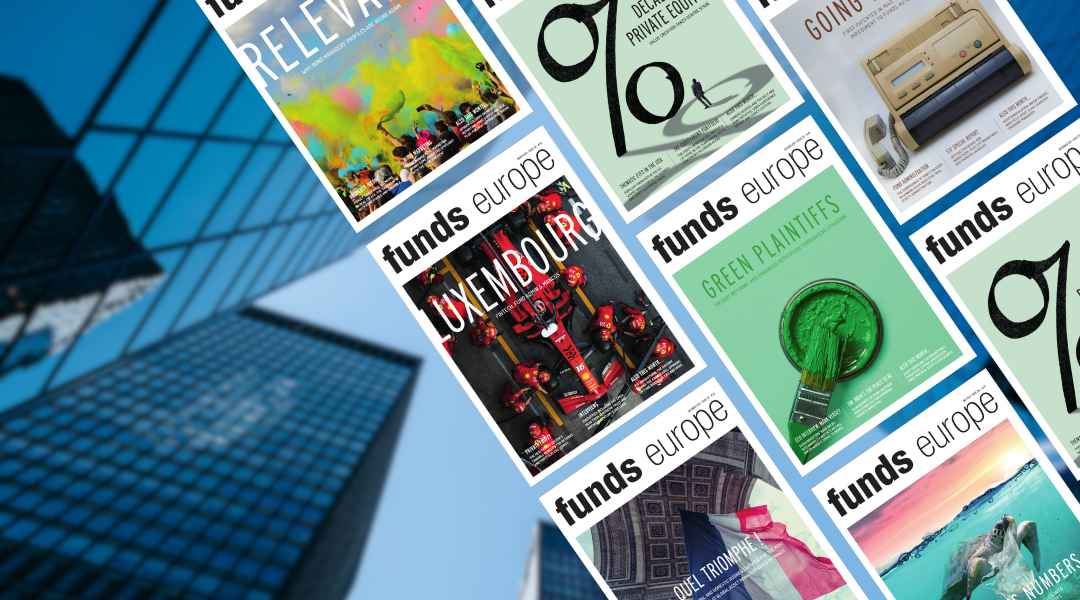 Cross-border fund initiatives are developing across Asia. Tilman Fechter of Clearstream says the key is to identify where the potential flows are, and build the infrastructure around them.
It is common in the funds industry to compare Asia with Europe. For many, the hope is that Asia will mirror Europe’s experience by gradually developing a harmonised regulatory system that will allow funds to be easily passported across the continent.
The goal for fund companies is a single, Asian, Ucits-type vehicle that could reach billions of potential customers without having to set up multiple funds in different jurisdictions. But, unfortunately, that kind of system is a long way off.
Patience is required, says Tilman Fechter, global head of sales and relationship management, investment fund services, and member of the executive board, Clearstream. A frequent visitor to Asia, Fechter is encouraged by the progress made by numerous cross-border investment schemes in the continent. A key impetus for such schemes is that many jurisdictions want to promote fund passporting as a means of improving their economic ties to other countries. The missing piece, however, is pressure from the end investors themselves.
“There is the political will in making sure the framework caters for cross-border investments,” he says. “The question is finding the demand. There is still work to be done to promote such investments among end investors.”
RECOGNITION
Cross-border fund initiatives are developing across Asia. Tilman Fechter of Clearstream says the key is to identify where the potential flows are, and build the infrastructure around them.
It is common in the funds industry to compare Asia with Europe. For many, the hope is that Asia will mirror Europe’s experience by gradually developing a harmonised regulatory system that will allow funds to be easily passported across the continent.
The goal for fund companies is a single, Asian, Ucits-type vehicle that could reach billions of potential customers without having to set up multiple funds in different jurisdictions. But, unfortunately, that kind of system is a long way off.
Patience is required, says Tilman Fechter, global head of sales and relationship management, investment fund services, and member of the executive board, Clearstream. A frequent visitor to Asia, Fechter is encouraged by the progress made by numerous cross-border investment schemes in the continent. A key impetus for such schemes is that many jurisdictions want to promote fund passporting as a means of improving their economic ties to other countries. The missing piece, however, is pressure from the end investors themselves.
“There is the political will in making sure the framework caters for cross-border investments,” he says. “The question is finding the demand. There is still work to be done to promote such investments among end investors.”
RECOGNITIONThe Mutual Recognition of Funds (MRF) scheme between Hong Kong and mainland China has proved to be a good case study for cross-border investment. The scheme allows eligible Hong Kong-domiciled funds to be distributed on the mainland. Eligible China-domiciled funds can enjoy the same treatment in Hong Kong. After much initial excitement, flows in the scheme have disappointed some market participants. Only six funds have been approved for sale in mainland China and the majority of the flows have gone to just one of them, a bond fund managed by JP Morgan Asset Management. Fechter says it will take time for the scheme to evolve. One of the key requirements is for MRF to be better understood by investors on the mainland. “Customers need to be better informed,” he says. “People need to be knowledgeable about the investment opportunity.” A challenge is that funds passported into China must compete with wealth management products from local Chinese institutions which are known and trusted. To be successful, foreign fund managers in China need a formidable distribution network. “It’s the same challenge which the Chinese asset managers have in Europe,” says Fechter. “Their funds are not known, so customers don’t necessarily demand them. In each case, you need distribution channels and brand recognition.” CONNECTING STOCKS
Another cross-border scheme that has attracted attention is the Stock Connect programme linking the Hong Kong Stock Exchange with the exchanges of Shanghai and, since December 5, Shenzhen. Thanks to the programme, more than half of mainland China’s listed equity market by capitalisation is available to international investors, through Hong Kong. As with MRF, flows on the Shenzhen Connect have been slow to begin with, a result Fechter says is understandable given that the scheme is a novel development for many international investors. It will take some time for international investors to become comfortable with the unique custody arrangements required by the Connect programme, for instance. Having said this, the Shenzhen Connect programme is particularly interesting for hedge funds and alternative funds, as the Shenzhen exchange lists a large number of smaller and more specialised stocks, particularly in the IT, retail and healthcare sectors. The Shanghai exchange, by contrast, is where mostly blue chips and shares in state-owned enterprises are traded. However, Fechter is optimistic about the future growth of the scheme. “I’m convinced Shenzhen is not the last exchange to be connected. It’s going to continue, China is going to adopt, learn and develop. Finally, they will have a structure that is robust and healthy. They have a good master plan.” As before, the key driver will be demand. The Stock Connect scheme will be declared a success once investors on each side of the bridge are conducting significant trading volumes. As with MRF, an increase in investor education and trust may be required. ENABLER
Perhaps the greatest challenge for cross-border fund schemes is one facing regulators and politicians of each individual country. This challenge is to open their jurisdictions to funds domiciled elsewhere while maintaining a healthy domestic funds industry that does not rely on protectionism for its success. “The problem is that jurisdictions often want to do two things, they want to get investments from abroad but at the same time they try to protect their own asset management industry,” says Fechter. “The winner will be the one who puts everyone on the same level playing field.” As a financial infrastructure provider, Clearstream already plays a role in supporting cross-border investments. Fechter sees his firm’s role expanding in the coming years as more money flows between Asia’s nations. “We are an enabler,” he says. “If the framework is set, we want to make sure that we do the best for customers in both directions. We make sure there are no technical or other burdens that make it difficult. It shouldn’t be a problem for an international bank to invest into A-shares [Chinese mainland-listed stocks] via Stock Connect, it should feel like a normal instrument. They shouldn’t think it’s complicated.” Clearstream provides securities services for the international market and 56 domestic markets worldwide and is in regular contact with central securities depositaries in Asia. It also participates in several Asia fund standardisation initiatives, which is part of the way in which the firm hopes to improve automation rates in the funds industry in Asia, a development that would cut costs for fund companies by improving efficiency. However, the growth of the cross-border industry will always depend on the needs of investors. It may be technically possible to support fund trades between, say, South Korea and Thailand. Clearstream’s infrastructure could even automate these trades, improving efficiency. Ultimately, though, such a scheme will only succeed when there is a large demand from investors on either side to buy each other’s funds. Asian investors are still building their knowledge of cross-border funds. It is a gradual process that will require a patient, long-term approach. ©2016 funds global asia

 At times like these, HSBC Asset Management easily pivots towards emerging markets.
At times like these, HSBC Asset Management easily pivots towards emerging markets. A comprehensive, cost-effective, and transparent currency overlay hedging solution is crucial to mitigate FX exposure risks in the complex landscapes of Japan and China's FX markets, explains Hans Jacob Feder, PhD, global head of FX services at MUFG Investor Services.
A comprehensive, cost-effective, and transparent currency overlay hedging solution is crucial to mitigate FX exposure risks in the complex landscapes of Japan and China's FX markets, explains Hans Jacob Feder, PhD, global head of FX services at MUFG Investor Services. Contradictory market sentiments from commentators have impeded the decision-making powers of the first wave of AI-powered ETFs, says Alvin Chia of Northern Trust Asset Servicing.
Contradictory market sentiments from commentators have impeded the decision-making powers of the first wave of AI-powered ETFs, says Alvin Chia of Northern Trust Asset Servicing. The world is transitioning from an era of commodity abundance to one of undersupply. Ben Ross and Tyler Rosenlicht of Cohen & Steers believe this shift may result in significant returns for commodities and resource producers over the next decade.
The world is transitioning from an era of commodity abundance to one of undersupply. Ben Ross and Tyler Rosenlicht of Cohen & Steers believe this shift may result in significant returns for commodities and resource producers over the next decade. Ross Dilkes, fixed income portfolio manager at Wellington Management, examines the opportunities and risks for bond investors presented by the region’s decarbonisation agenda.
Ross Dilkes, fixed income portfolio manager at Wellington Management, examines the opportunities and risks for bond investors presented by the region’s decarbonisation agenda. Shareholders in Japan no longer accept below-par corporate governance standards. Changes are taking place, but there are still areas for improvement, says Tetsuro Takase at SuMi Trust.
Shareholders in Japan no longer accept below-par corporate governance standards. Changes are taking place, but there are still areas for improvement, says Tetsuro Takase at SuMi Trust.


